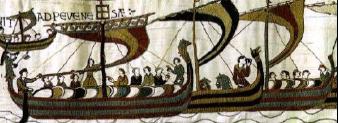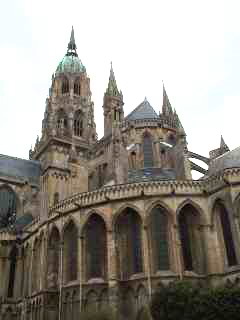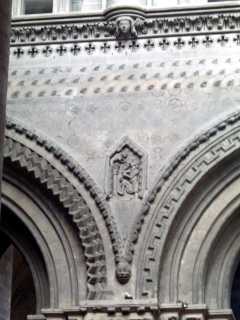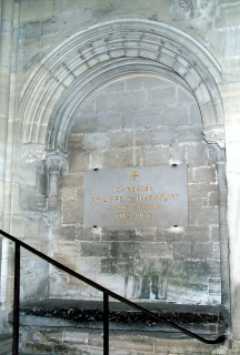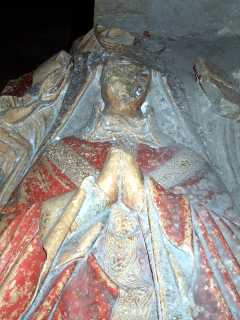Bayeux is an ancient town
well worth visiting for its beauty and atmosphere. There are
many sights to see but, of course, we headed straight for the
Bayeux Tapestry. We hope to return to see more of the town another
time.
The Bayeux tapestry has
to be seen to be believed. It is remarkable that an embroidered
cloth over seventy metres long could survive intact for over
nine hundred years. It tells the story of the Norman conquest
of England in 1066 and events leading up to the invasion, from
the point of view of the conquerors. Fifty eight scenes run along
the cloth like a strip of film. A commentary is embroidered above
the scenes, written in Latin. The tapestry is probably the work
of Anglo-Saxon monks supervised by Odo, William the Conqueror's
half brother and Bishop of Bayeux.
The tapestry is displayed
in a long glass cabinet so that visitors can walk along its whole
length. The Centre Guillaume-le-Conquérant, which has
housed the tapestry since it was taken down from the cathedral
walls, also has displays and exhibits to give visitors a taste
of medieval life and an understanding of the historical background.
English speaking visitors are very well catered for throughout,
including in the gift shop. As visitors from Sussex, we were
interested to see the little church of Bosham represented on
the tapestry.
The cathedral at Bayeux
was consecrated in the presence of William the Conqueror and
his Queen Matilda in 1077. It is a beautiful building with many
fascinating architectural features.
Some genealogists believe
that William de Braose I's mother, Gonnor, was the daughter of
another Bishop of Bayeux - Hugh, who died in 1049. He was a member
of the d'Ivry family, which decended from Ralph, Count of Bayeaux
(died 1011). Ralph was a half brother of Richard I, Duke of Normandy.
The d'Ivry connection with Gunnor is supported by a record of
lands which she gave to the L'Abbaye aux Dames in Caen. Her gifts
are known to have been held previously by the d'Ivry family.
There were some remarkable
ancient monuments in the cathedral crypt.
|
© Lynda Denyer, Steyning,
2000 |

